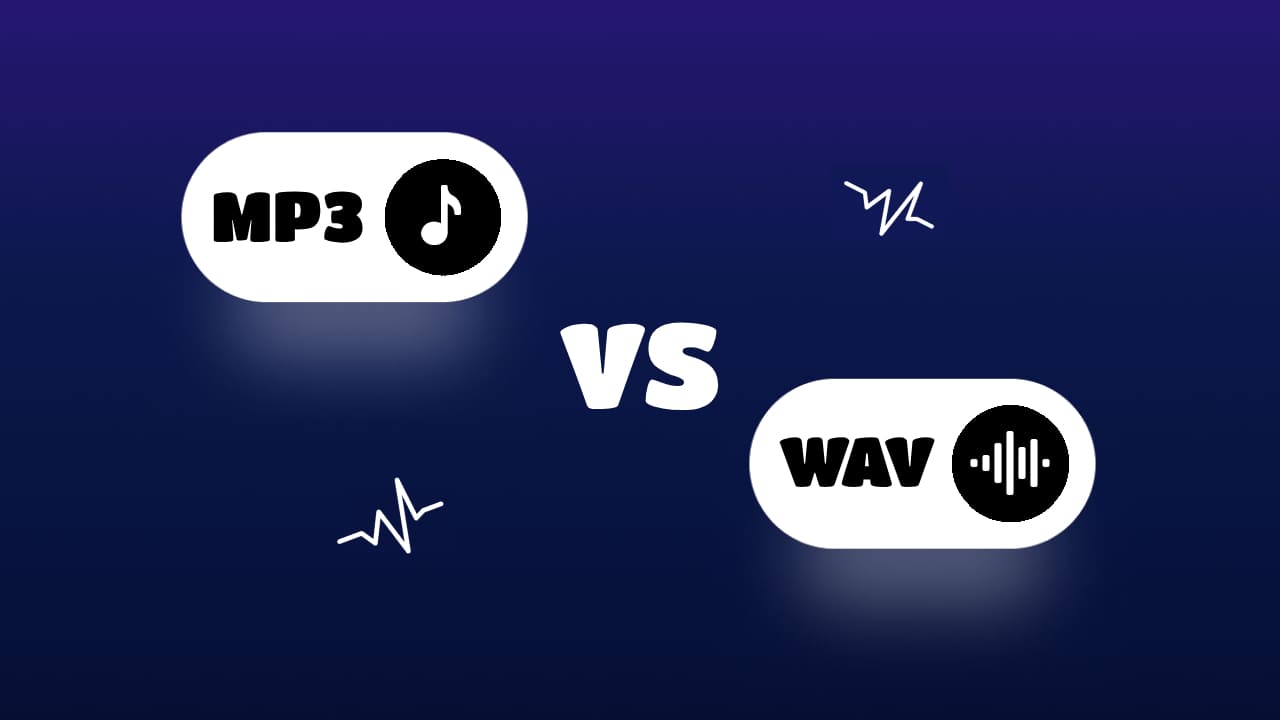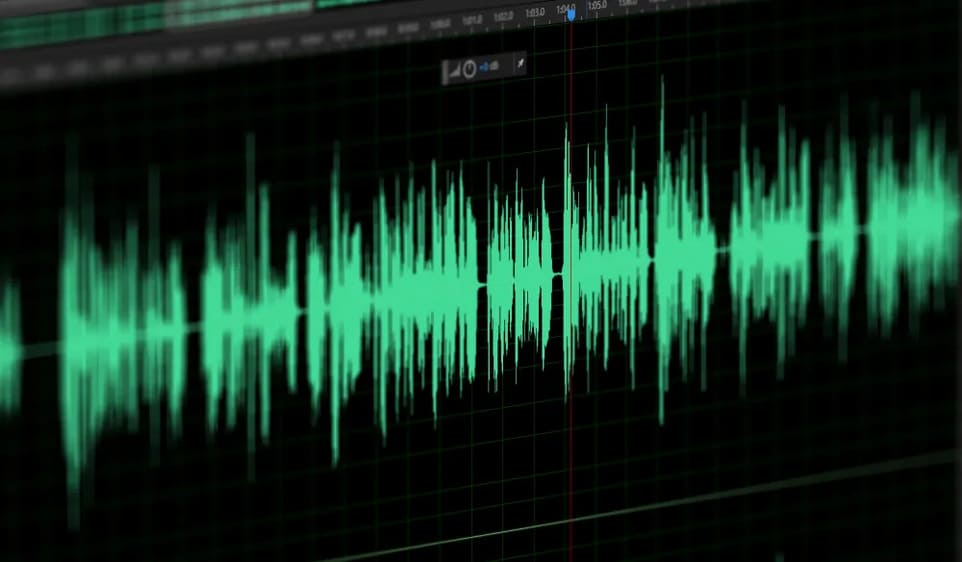MP3 vs WAV: Key Audio Format Differences
In the digital audio landscape, two file formats have become staples for their unique capabilities: MP3 and WAV. Each serves a specific function, orchestrating a delicate balance between quality, size, and compatibility. This exploration into MP3 and WAV will shed light on their inherent features and help you decide which format best suits your needs, from casual listening to professional audio work.

What is MP3?
MP3, designated as MPEG-1 Audio Layer III, revolutionized digital music sharing with its lossy compression. By selectively removing audio frequencies that are typically imperceptible to the average listener, MP3 reduces file sizes significantly, enabling faster sharing and efficient streaming without noticeably compromising quality.
What is WAV?
WAV, or Waveform Audio File Format, is an uncompressed, lossless audio format crafted by IBM and Microsoft. This raw form of audio conserves pristine quality by forgoing compression, making it a staple in professional realms such as music production. However, its high fidelity comes with a caveat—WAV files are voluminous, a factor to consider if storage or bandwidth is a constraint.
Differences Between MP3 and WAV
Compression: MP3 uses lossy compression to reduce file size, which means some audio quality is lost. WAV files are uncompressed and retain all audio information, providing higher fidelity.
Quality: Due to its compression, MP3 can suffer a reduction in sound quality when compared to WAV, which offers full audio quality as recorded.
Compatibility: MP3 is widely supported across all devices and platforms, making it the most universal audio format. WAV, while also widely compatible, is primarily used in professional environments and software.
File Size: MP3 files are significantly smaller than WAV files, making them ideal for storage and internet sharing. WAV files can be very large, which may limit their practicality for everyday use.
Bit Depth and Sampling Rate: WAV files can have a higher bit depth and sampling rate than MP3s, contributing to their superior sound quality. This makes WAV format more suitable for professional audio recording and editing.
Editing: WAV is preferred for editing because its uncompressed nature means no quality is lost during the process. MP3, being compressed, may degrade with each edit and re-encoding.

For a more visual representation, see the table below:
| Attribute | MP3 | WAV |
| Compression | Lossy | None (Uncompressed) |
| Quality | Lower due to compression | Higher, original quality |
| Compatibility | Highly compatible | Widely compatible, favored in professional settings |
| File Size | Smaller, ideal for sharing | Larger, requires more storage |
| Bit Depth | Typically lower | Higher, offers more detailed sound |
| Sampling Rate | Generally lower | Higher, captures more detail |
| Editing | Not ideal, loses quality with edits | Preferred, retains quality |
Converting Between MP3 and WAV
Conversion between these two formats is common and can be accomplished using various software tools and online platforms. Converting MP3 to WAV is typically done to restore compatibility with specific devices, while converting WAV to MP3 reduces files sizes for easier sharing.
Methods of Conversion:
Software Tools: Dedicated audio editing software like Audacity, Adobe Audition, and Logic Pro offer robust features for converting audio files, ensuring both the integrity of the sound and metadata during the conversion process.
Online Converters: Online platforms provide a quick and user-friendly option to convert files without installing software. Websites like Zamzar, Online Audio Converter, and CloudConvert support a variety of format conversions, including MP3 to WAV and vice versa.
Operating System Utilities: Both Windows and macOS have built-in tools that can convert audio files. On macOS, for instance, the use of iTunes or the Music app can change formats with just a few clicks, while Windows users can utilize Windows Media Player for similar tasks.
Unleashing Superior Audio Processing Capabilities
Tencent MPS stands at the forefront of audio processing, delivering cutting-edge capabilities that redefine audio quality and clarity.
Voice Denoising: Utilizing advanced algorithms, Tencent MPS significantly reduces background noise, ensuring that the primary audio content stands out clearly and distinctly.
Audio Separation: Tencent MPS efficiently separates mixed audio into distinct tracks, allowing for targeted processing of voice and music, crucial for producing high-quality audio content.
Audio Quality Enhancement: Tencent MPS enhances audio clarity and fidelity, minimizing quality loss from noise distortion and compression, resulting in realistic, high-quality sound.
Volume Balancing: With dynamic audio adjustment, Tencent MPS maintains balanced volumes across different segments, enhancing overall auditory comfort and consistency.
Conclusion
Ultimately, choosing between MP3 and WAV formats depends on balancing quality with convenience. MP3 is ideal for daily use, offering manageable file sizes and compatibility across devices. WAV remains the choice for professional settings that demand pristine audio. With the tools available today, converting between formats is a simple task, allowing users to adapt as needed for their listening or production requirements.
FAQs
When should I choose MP3?
Opt for MP3 when storage space is limited, or broad playback compatibility is needed.
What are the main use cases for WAV?
WAV is preferred in settings requiring high fidelity audio, such as professional editing and music production.
How does Tencent MPS optimize my audio experience?
Tencent MPS optimizes audio by offering high-quality encoding at lower bitrates, significantly enhancing transmission speed and end-user satisfaction without sacrificing audio quality.
You are welcome to Contact Us for more information.
